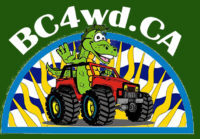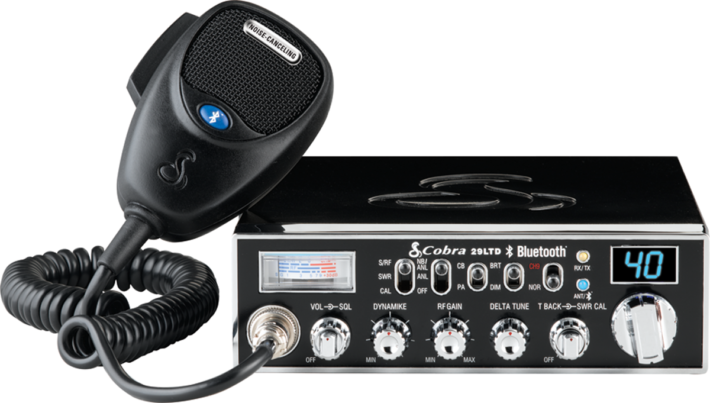Being able to coordinate with other vehicles in your group to give directions, discuss plans, warn of hazards, and generally chit-chat makes an excursion into the backcountry far more enjoyable, and the ability to call for help can save a life. You can’t count on your cell phone when you get into the mountains, so you need to have a radio.
Background:
The original way for the majority of the population to communicate without phones was Citizen Band (CB) Radios. Mainly used at first by truckers and explorers, they exploded in popularity in the mid-70s when it seemed like every third vehicle had a CB in it. Once cell phones became popular CBs faded into the background again for most people, but until recently they stayed popular with truckers and 4×4 clubs
HAM radio, known officially as Amateur Radio, has been around since the early 1900s, however the size and cost of the radios made them unattractive for portable use. This changed after World War two, when companies that had made radio gear for the military shifted their production to include radios that worked on the Amateur Radio frequencies. HAM radios have much better rage and more channels to choose from than CBs, however until recently they were also much more expensive. In the past 5 years the prices of HAM radios have dropped to astoundingly low prices, to the point that you can get an entry level hand-held HAM radio for around $50. It is important to note that, except in emergencies, you must have a licence to operate a HAM radio. Most cities have a radio club that offers a course, or you can study on-line and challenge the test. It is also interesting to note that most areas have Emergency Broadcasts on HAM frequencies and Search and Rescue typically uses HAM. This means that in a quake or other disaster when Internet, cell phones, TV, and everything else is shut down you will still be able to get information on a HAM radio.
Family Radio Service (FRS) hand held “Walkie-Talkies” entered the market in 1996 as an alternative to the CB based Walkie-Talkies that were in use previously. The FRS radios are not as susceptible to interference as CB based Walkie-Talkies, so they typically have a longer usable range and clearer sound. These are the radios you often see at Canadian Tire or Walmart sold in a two-pack.
Compatibility:
Generally each type of radio only talks to radios of its own type. You can get a high end HAM radio that also has CB and FRS frequencies, but that is the exception not the norm.
Performance:
All radios are “Line of Sight” devices. This means that the ideal scenario is that you can see the person you are trying to talk with. For example you will usually get a clearer signal talking mountain top to mountain top 20 kilometers across a valley than you will talking to a person 5 kilometers away on a twisty mountain road. If there is rock, buildings, or major sources of electrical interference between you and the person you are talking to then the signal has to bounce off something to reach the other person. This weakens the signal and can greatly increase the distance it actually has to travel, putting someone only a couple of km away “as the crow flies” outside the effective range of your radio.
With any two radios on similar design and quality the range will be determined by broadcast power, usually listed in Watts. More wattage means more range.
The following comparisons assume decent quality radios that put out the maximum broadcast power possible, either by law or by how they are powered, and are based on my experiences on the back-roads of B.C.
Two vehicles with CB radios will typically be able to communicate at a distance of 10 km. From a hand held CB and a vehicle you can expect a distance of 5 km, and between two hand held CBs you will typically get a range of 2km.
Vehicles with HAM radios can easily get a range of 15 km, and in decent conditions 30 to 40 km is not unusual. HAM radios can also use relay towers to re-broadcast their signal. This means that if you are in range of a tower you can potentially communicate over hundreds of km. If you are the type to drive deep in the bush you can also pack a collapsible HAM radio tower which can be strung up a tree and connected to your vehicle mounted HAM radio to double or even triple its range. You can use this for calling for help in an emergency (pack a GPS as well so you can give your location), or if you are setting up camp for a few days you can use it to call out to family to confirm that you reached your camp site. A hand held HAM radio to a vehicle mounted HAM radio will usually get a range around 8 km, and two handhelds can typically communicate over 5 km. A hand held radio being used in a vehicle can also have a roof mounted antenna connected to boost its range up to around 12 km. These antennas are usually mounted with a magnet and connect to the radio in a matter of seconds.
FRS radios are often claimed to have ranges of “Up to 30 km” and such. These claims are ridiculous and would only happen under laboratory conditions. On a mountain road 3-4 km is about the best you will usually get, and if you take a pair to someplace like Disneyland you will get better distance by shouting.

